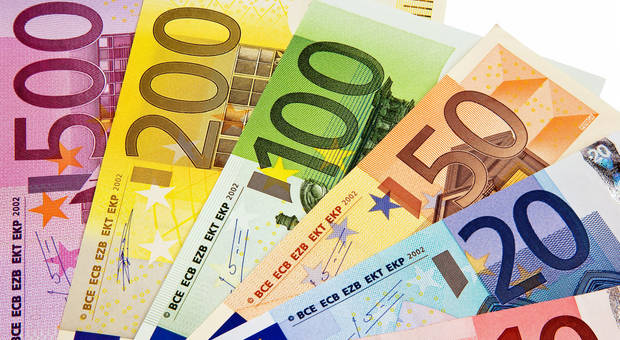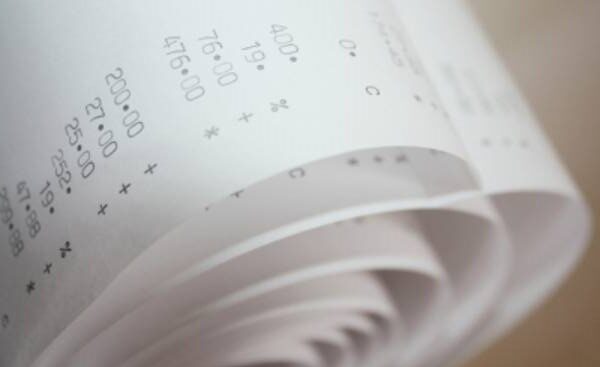
Austrian VAT declaration / Umsatzsteuervoranmeldung 2020
Following up on my latest blog, let me continue with the specific setup for the VAT return in Austria. This electronic VAT declaration called Umsatzsteuervoranmeldung “UVA” must be uploaded monthly or quarterly (depending on the company’s turnover) in a proprietary XML format to the web site FinanzOnline of BMF, the Austrian Ministry of Finance. The interface is well maintained by the DACH support team for Dynamics, but there was nowhere on the Internet a description of the barebone setup. Well, up until now.
The only documentation is the class TaxReport_ReportAT, which is used by the periodic function VAT payment in the Tax module to produce a “UVA” declaration, both printed and the electronic. I reverse engineered it, and it should be noted that
- It requires a non-continuous number sequence XML VAT package number to form a message ID.
- The printed PDF version is not accepted by the ministry anymore, but it is quite useful to visualize and check the VAT return prior to the booking. The latest template required by the class can be downloaded here.
- The printed form expects an exotic address format of the legal entity primary address, one with a separate house number Street number.
- The tax number (not to mix with the European VAT (UID)-number) MUST be present in the legal entity, Tax registration number field in the format xxx/yyyy-ZZ, where ZZ is the number of the BMF’s local office. The same can be seen without dashes and slashes on FinanzOnline.
- The class uses a set of hardcoded 4 digit codes to map tax codes to cells on the tax return. There are cells (and the respective XML elements) for a total tax base per tax period per VAT rate, or a tax amount per tax period per VAT rate.
Below are the most relevant VAT return cell codes. For more information on the individual VAT return cells, please refer to the comprehensive description (de-at) on the BMF site.
You should add the 16 codes to the table VAT reporting codes with the Report layout = Austrian report layout.
| Reporting code | Report text | Brief description |
| 1122 | Gesamt Umsatzsteuer: 20% Normalsteuersatz | Total sales VAT: full 20% |
| 1022 | Gesamt Bemessungsgrundlage: 20% Normalsteuersatz | Total sales base: full 20% |
| 1011 | Bemessungsgrundlage: Ausfuhrlieferungen § 6 Abs. 1 Z 1 iVm § 7 | Sales base: Export 3rd country tangible |
| 1021 | Bemessungsgrundlage: Steuerschuldübergang § 19, grenzüberschreitende Leistungen | Sales base: Reverse charge incl. export of services IC, 3rd |
| 1020 | Bemessungsgrundlage: übrige steuerfreie Umsätze ohne Vorsteuerabzug | Sales base: Other exempt sales |
| 1017 | Bemessungsgrundlage: IgL Art. 6 Abs. 1 ohne Fahrz | Sales base: IC delivery |
| 1160 | Vorsteuer ohne… | Total purchase VAT except for… |
| 1157 | Steuerschuldübergang bei Bezug gemäß § 19 Abs. 1 zweiter Satz, § 19 Abs. 1c | IC purchase payable VAT: Reverse charge on service acquis |
| 1166 | Vorsteuer: Steuerschuldübergang gemäß §19, grenzüberschreitende Leistungen | IC purchase receivable VAT: reverse charge on service acquis |
| 1183 | Vorsteuer: Einfuhrumsatzsteuer geschuldet (§ 12 Abs. 1 Z 2 lit. b) | Purchase 3rd country import VAT (payable) |
| 1172 | IgE Steuerschuld: 20% Normalsteuersatz | IC purchase payable VAT: full 20% |
| 1072 | IgE Bemessungsgrundlage: 20% Normalsteuersatz | IC purchase payable base: full 20% |
| 1106 | Gesamt Umsatzsteuer: 13% ermäßigter Steuersatz | Total sales VAT: reduced 13% (agro B2C) |
| 1006 | Gesamt Bemessungsgrundlage: 13% ermäßigter Steuersatz | Total sales base: reduced 13% (agro B2C) |
| 1129 | Gesamt Umsatzsteuer: 10% ermäßigter Steuersatz | Total sales VAT: reduced 10% (foodstuffs, print media) |
| 1029 | Gesamt Bemessungsgrundlage: 10% ermäßigter Steuersatz | Total sales base: reduced 10% (foodstuffs, print media) |
Finally, the above 16 reporting cells are assigned to my 12 VAT codes in the VAT codes table:
| Report setup | exF | exS | euF | euA | euR | euS | NR | TF | doF | doA | doH | doR |
| Taxable sales | 1022 | 1022 | 1006 | 1029 | ||||||||
| Duty-free sale | 1011 | 1021 | 1017 | 1017 | 1017 | 1021 | 1020 | |||||
| VAT payable | 1122 | 1122 | 1106 | 1129 | ||||||||
| Taxable purchases | ||||||||||||
| Duty-free purchase | ||||||||||||
| VAT receivable | 1160 | 1160 | 1160 | 1160 | ||||||||
| Taxable import | 1072 | 1072 | 1073 | |||||||||
| Offset taxable import | ||||||||||||
| Import VAT/ purchase VAT | 1183 | 1172 | 1172 | 1173 | 1157 | |||||||
| Offset import VAT/ purchase VAT | 1166 | |||||||||||
| (EU sales list excluded) | yes | yes | yes | yes | yes | yes | yes | yes | ||||
| (Country type) | 3rd | 3rd | EU | EU | EU | EU | Dom | Dom | Dom | Dom | Dom |
The Report setup – credit note of the VAT code records is identical.
The full list of the Austrian VAT reporting codes can be downloaded here. The not relevant codes are marked “N/A”. My criteria for the relevance for a typical manufacturing or a service business were:
- Reselling of cars, scrap, gas, electricity, CO2 certificates are ‘exotic’ businesses, as well as seafaring, trucking, taxi services, real estate agencies;
- Small businesses below the 100 000 EUR turnover threshold would never use Dynamics AX either;
- The Jungholz and Mittelberg exclave valleys with the German VAT are too small to get noticed;
- It is not practical to apply a dedicated tax code to goods intended for the self-consumption by the company owner: such goods do not reduce the income/corporate tax base either and should better not appear in the accounting at all, or be simply sold to the owner via a sales order as everything else.
Happy tax paying!
Blog series on Finance and VAT in the EU
Further reading:
Luxembourg VAT Declaration for D365FO in PDF
Troubleshoot the VAT Declaration in D365 for Finance
D365 Petty cash review
Advance payment invoices in Fixed fee projects in D365, D-A-CH style
Sometimes you pay Reverse Charge in D365
Minimalistic EU VAT Configuration in Dynamics 365
Austrian VAT declaration / Umsatzsteuervoranmeldung 2020
EU Tax directives



